The Meadow-scene
|
THE MEADOW SCENE
with frame
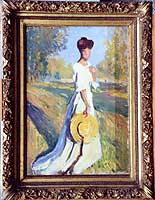
Curator photo showing varnish lift off and part
with varnish and to the far right original condition with
uncleaned surface. |
THE REVERSE OF
The Meadow Scene
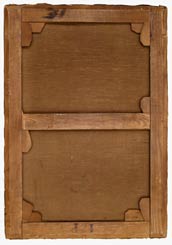
The reverse of "The
Meadow
Scene". Click above for a larger picture. |
|
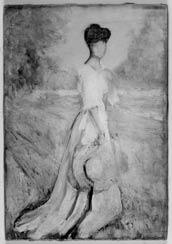
IR photo |
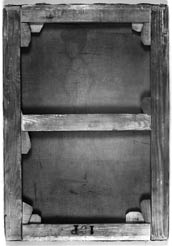
IR photo |
1)
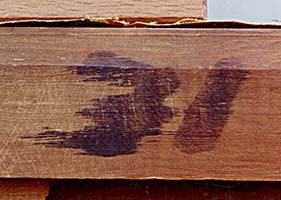
On the stretcher painted in diluted, lilac
colour: ‘31’. The same kind of exhibition number as on the
‘River scene’. Where and which are the
other 29, at least, paintings from
this exhibition? If we are right in our theories, this exhibition
should have taken place at around 1899-1900, after the death of
Suzanne.
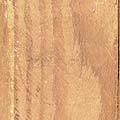
We also find the same kind
of stock number as on the other two stretchers, written in pencil.
Here it has almost been wiped out. The number is ‘454’
followed by a dot,
within a circle.
2)
Measure, 55x38, figure
is written on the canvas in pencil
by the same hand, though covered by the stretcher.
3)
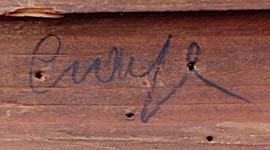
Written in pencil on
the frame: ‘Creuse’, (observe how the letter ‘s’ is written). We have
already seen on the two others, written by the same hand: ‘Creu’.
We know that Monet used to have exhibition frames for his paintings.
This means that the painting was exhibited in a frame that did not
follow the bargain.
Once again: In Claude Monet's
Giverny nothing is done at random, consequently there might
exist other frames with ‘Creu’ or
‘Creuse’, written by
the same characteristic hand! For
the moment being we have no explanation for the meaning of these
words. Perhaps you have an idea what this means?! Please send an
email and tell us. We know that in 1975 the Monet
collection of frames still was at Giverny. Where are they now? |